[caption id="attachment_286124" align="alignnone" width="1242"]
 (Photo: Twitter/@Landon_Young_67)
(Photo: Twitter/@Landon_Young_67)[/caption]
You didn't think the offensive line had beach bodies ready to rock during football weather? Well guess again.
Earlier this week on KSR, we posted a feature on
quarterbacks where a lot of advanced stats were used. In the exercise, we tried to explain just what Kentucky's offense has been missing. The numbers can sometimes help when evaluating a specific player or position unit instead of just leaning on the eyeball test and traditional stats that are a bit outdated as we enter the 151st season of college football.
Where these numbers can really help us out is on the line of scrimmage. Duke head coach David Cutcliffe is on record saying that the big uglies are "the greatest humans in football" and it's hard to disagree with that sentiment.
https://twitter.com/DukeFOOTBALL/status/1054877631001313281?s=20
There are no stats given out to the blockers and more times than not they are the culprit of fan frustration when a negative play occurs and never the beneficiary of praise when a big play happens. It can be hard for many to understand the true importance of the position because of the servitude required so the offense can succeed. Thanks to some newly created advanced metrics, we are now able to handicap just what an offensive line does and doesn't do well with some numerical backing.
The last two seasons we've seen UK's Big Blue Wall put together some fantastic performances as they've twice been a finalist for the Joe Moore Award and led the way for for two of the top three program individual rushing efforts in consecutive seasons. John Schlarman's group will enter the year with three redshirt senior starters and a potential three-and-done tackle as Kentucky again figures to have one of the best offensive lines in college football.
Now we're going to breakout some advanced stats from the past two seasons to show you exactly what Kentucky has and hasn't done well. Some might surprise you while others make a lot of sense. If needed, a more specific definition for these terms can be found at
Football Outsiders.

To start we must dive into a metric know as adjusted line yards. This is a measure used to calculate how well the offensive line did its job during run plays. The line gets 100 percent of the credit in the first three yards gained and 50 percent from yards 4-8. Anything over 8 is given to the ballcarrier while tackles for loss count against you. Over the last two seasons, we've seen Kentucky excel at doing their jobs.
The Wildcats ranked 18th in both of the last two seasons as they've shined in creating running lanes. With Benny Snell, the Wildcats finished 11th in this metric on standard downs (1st and 10, 2nd and 7 or less, 3rd and 4 or less, etc.) as they constantly stayed ahead of the chains. With Lynn Bowden, Kentucky ranked 5th in passing downs (2nd and long, 3rd and long) as the run-first offense was able to gobble up yards when defenses had to at least think about the forward pass. In the Belk Bowl, twice UK recorded explosive play touchdowns in the situation.
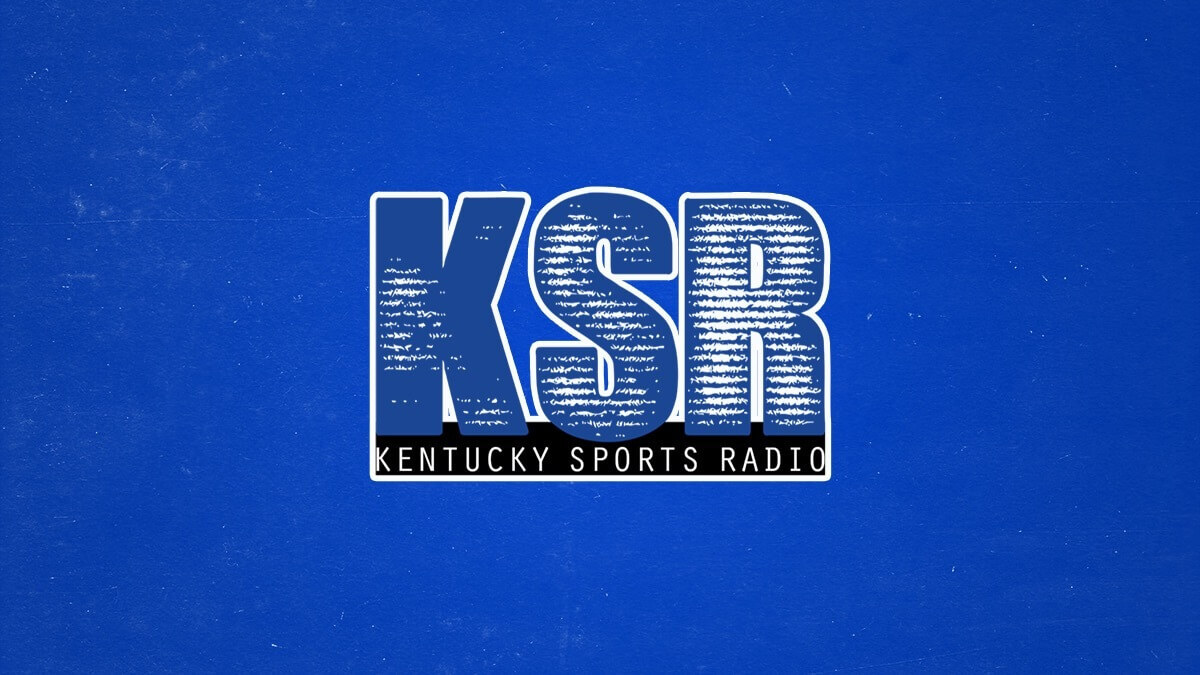
Opportunity rate is simply the percentage of plays where the offense simply gains four yards outside of short-yardage situations. This tries to determine if the unit does its job on every play and UK's o-line has been one of the best in college football at this the past few seasons. After finishing 16th in 2018, Kentucky made a jump into the top-10 this past season. They get it done on a down-to-down basis.
Due to all of mediocre results we saw with the wildcat formation in short-yardage situations last season, Kentucky ranked 121st in power success rate. This is exactly what it sounds like. In third and fourth down scenarios when you need less than two yards, are you able to move the chains? Kentucky was bad at it last season. However, they weren't that much better with Benny Snell finishing tied for 57th. This needs to be a point of emphasis for offensive coordinator Eddie Gran.
One of the biggest jobs of the offensive line is to help the skill players avoid negative plays. The easiest way to get behind the chains and to find yourself in disadvantageous passing down situations is to allow havoc. Over the past two seasons, UK has ranked in the top-30 in stuff rate which is the percentage of runs that were stopped at or behind the line of scrimmage. This was even more impressive when you consider that UK ran on nearly every down last year and constantly stayed ahead of the chains in a very high volume amount of attempts.
John Schlarman has done a lot of good things since arriving, but one thing his group really hasn't figured out is pass protection. When it comes to sack rate, we've seen Kentucky rank sub-80 for most of their recent history. They hit rock bottom in 2018 checking in at 109th with a first-year starting quarterback. UK was able to bounce back in 2019, but in a very small sample size. We've talked about the need for improved quarterback play, but the passers need to be protected in order to make the vertical throws required in modern day college football.
Heading Into 2019
There's no hiding from the fact that this group has been really, really good and the numbers help back it up. The Wildcats have had their flaws (short-yardage, pass protection) but they have been beyond rock solid in every other area and are a big reason why the team has won 18 games the last two years. Now they head into the fall with some major ammo returning.
https://twitter.com/PFF_Brent/status/1230186016763502592?s=20
Come SEC Media Days, Kentucky should have two consensus first-team selections (Drake Jackson, Darian Kinnard) while both Luke Fortner and Landon Young deserve to be discussed for second and third teams. That is a very strong starting base for a group that has a chance to be dominant this fall.
Offensive line is still a positional unit that is very hard to calculate and sack rate and opportunity rate don't exactly get your name in the bright lights. However, with analytics becoming a bigger part of the football world, we now have some measures to grade and handicap play in the trenches. But at the end of the day, it is an inexact science and that is just another reason why the road graders are the best humans in football.

 (Photo: Twitter/@Landon_Young_67)[/caption]
You didn't think the offensive line had beach bodies ready to rock during football weather? Well guess again.
Earlier this week on KSR, we posted a feature on quarterbacks where a lot of advanced stats were used. In the exercise, we tried to explain just what Kentucky's offense has been missing. The numbers can sometimes help when evaluating a specific player or position unit instead of just leaning on the eyeball test and traditional stats that are a bit outdated as we enter the 151st season of college football.
Where these numbers can really help us out is on the line of scrimmage. Duke head coach David Cutcliffe is on record saying that the big uglies are "the greatest humans in football" and it's hard to disagree with that sentiment.
https://twitter.com/DukeFOOTBALL/status/1054877631001313281?s=20
There are no stats given out to the blockers and more times than not they are the culprit of fan frustration when a negative play occurs and never the beneficiary of praise when a big play happens. It can be hard for many to understand the true importance of the position because of the servitude required so the offense can succeed. Thanks to some newly created advanced metrics, we are now able to handicap just what an offensive line does and doesn't do well with some numerical backing.
The last two seasons we've seen UK's Big Blue Wall put together some fantastic performances as they've twice been a finalist for the Joe Moore Award and led the way for for two of the top three program individual rushing efforts in consecutive seasons. John Schlarman's group will enter the year with three redshirt senior starters and a potential three-and-done tackle as Kentucky again figures to have one of the best offensive lines in college football.
Now we're going to breakout some advanced stats from the past two seasons to show you exactly what Kentucky has and hasn't done well. Some might surprise you while others make a lot of sense. If needed, a more specific definition for these terms can be found at Football Outsiders.
(Photo: Twitter/@Landon_Young_67)[/caption]
You didn't think the offensive line had beach bodies ready to rock during football weather? Well guess again.
Earlier this week on KSR, we posted a feature on quarterbacks where a lot of advanced stats were used. In the exercise, we tried to explain just what Kentucky's offense has been missing. The numbers can sometimes help when evaluating a specific player or position unit instead of just leaning on the eyeball test and traditional stats that are a bit outdated as we enter the 151st season of college football.
Where these numbers can really help us out is on the line of scrimmage. Duke head coach David Cutcliffe is on record saying that the big uglies are "the greatest humans in football" and it's hard to disagree with that sentiment.
https://twitter.com/DukeFOOTBALL/status/1054877631001313281?s=20
There are no stats given out to the blockers and more times than not they are the culprit of fan frustration when a negative play occurs and never the beneficiary of praise when a big play happens. It can be hard for many to understand the true importance of the position because of the servitude required so the offense can succeed. Thanks to some newly created advanced metrics, we are now able to handicap just what an offensive line does and doesn't do well with some numerical backing.
The last two seasons we've seen UK's Big Blue Wall put together some fantastic performances as they've twice been a finalist for the Joe Moore Award and led the way for for two of the top three program individual rushing efforts in consecutive seasons. John Schlarman's group will enter the year with three redshirt senior starters and a potential three-and-done tackle as Kentucky again figures to have one of the best offensive lines in college football.
Now we're going to breakout some advanced stats from the past two seasons to show you exactly what Kentucky has and hasn't done well. Some might surprise you while others make a lot of sense. If needed, a more specific definition for these terms can be found at Football Outsiders.
 To start we must dive into a metric know as adjusted line yards. This is a measure used to calculate how well the offensive line did its job during run plays. The line gets 100 percent of the credit in the first three yards gained and 50 percent from yards 4-8. Anything over 8 is given to the ballcarrier while tackles for loss count against you. Over the last two seasons, we've seen Kentucky excel at doing their jobs.
The Wildcats ranked 18th in both of the last two seasons as they've shined in creating running lanes. With Benny Snell, the Wildcats finished 11th in this metric on standard downs (1st and 10, 2nd and 7 or less, 3rd and 4 or less, etc.) as they constantly stayed ahead of the chains. With Lynn Bowden, Kentucky ranked 5th in passing downs (2nd and long, 3rd and long) as the run-first offense was able to gobble up yards when defenses had to at least think about the forward pass. In the Belk Bowl, twice UK recorded explosive play touchdowns in the situation.
To start we must dive into a metric know as adjusted line yards. This is a measure used to calculate how well the offensive line did its job during run plays. The line gets 100 percent of the credit in the first three yards gained and 50 percent from yards 4-8. Anything over 8 is given to the ballcarrier while tackles for loss count against you. Over the last two seasons, we've seen Kentucky excel at doing their jobs.
The Wildcats ranked 18th in both of the last two seasons as they've shined in creating running lanes. With Benny Snell, the Wildcats finished 11th in this metric on standard downs (1st and 10, 2nd and 7 or less, 3rd and 4 or less, etc.) as they constantly stayed ahead of the chains. With Lynn Bowden, Kentucky ranked 5th in passing downs (2nd and long, 3rd and long) as the run-first offense was able to gobble up yards when defenses had to at least think about the forward pass. In the Belk Bowl, twice UK recorded explosive play touchdowns in the situation.
 Opportunity rate is simply the percentage of plays where the offense simply gains four yards outside of short-yardage situations. This tries to determine if the unit does its job on every play and UK's o-line has been one of the best in college football at this the past few seasons. After finishing 16th in 2018, Kentucky made a jump into the top-10 this past season. They get it done on a down-to-down basis.
Due to all of mediocre results we saw with the wildcat formation in short-yardage situations last season, Kentucky ranked 121st in power success rate. This is exactly what it sounds like. In third and fourth down scenarios when you need less than two yards, are you able to move the chains? Kentucky was bad at it last season. However, they weren't that much better with Benny Snell finishing tied for 57th. This needs to be a point of emphasis for offensive coordinator Eddie Gran.
One of the biggest jobs of the offensive line is to help the skill players avoid negative plays. The easiest way to get behind the chains and to find yourself in disadvantageous passing down situations is to allow havoc. Over the past two seasons, UK has ranked in the top-30 in stuff rate which is the percentage of runs that were stopped at or behind the line of scrimmage. This was even more impressive when you consider that UK ran on nearly every down last year and constantly stayed ahead of the chains in a very high volume amount of attempts.
John Schlarman has done a lot of good things since arriving, but one thing his group really hasn't figured out is pass protection. When it comes to sack rate, we've seen Kentucky rank sub-80 for most of their recent history. They hit rock bottom in 2018 checking in at 109th with a first-year starting quarterback. UK was able to bounce back in 2019, but in a very small sample size. We've talked about the need for improved quarterback play, but the passers need to be protected in order to make the vertical throws required in modern day college football.
Opportunity rate is simply the percentage of plays where the offense simply gains four yards outside of short-yardage situations. This tries to determine if the unit does its job on every play and UK's o-line has been one of the best in college football at this the past few seasons. After finishing 16th in 2018, Kentucky made a jump into the top-10 this past season. They get it done on a down-to-down basis.
Due to all of mediocre results we saw with the wildcat formation in short-yardage situations last season, Kentucky ranked 121st in power success rate. This is exactly what it sounds like. In third and fourth down scenarios when you need less than two yards, are you able to move the chains? Kentucky was bad at it last season. However, they weren't that much better with Benny Snell finishing tied for 57th. This needs to be a point of emphasis for offensive coordinator Eddie Gran.
One of the biggest jobs of the offensive line is to help the skill players avoid negative plays. The easiest way to get behind the chains and to find yourself in disadvantageous passing down situations is to allow havoc. Over the past two seasons, UK has ranked in the top-30 in stuff rate which is the percentage of runs that were stopped at or behind the line of scrimmage. This was even more impressive when you consider that UK ran on nearly every down last year and constantly stayed ahead of the chains in a very high volume amount of attempts.
John Schlarman has done a lot of good things since arriving, but one thing his group really hasn't figured out is pass protection. When it comes to sack rate, we've seen Kentucky rank sub-80 for most of their recent history. They hit rock bottom in 2018 checking in at 109th with a first-year starting quarterback. UK was able to bounce back in 2019, but in a very small sample size. We've talked about the need for improved quarterback play, but the passers need to be protected in order to make the vertical throws required in modern day college football.
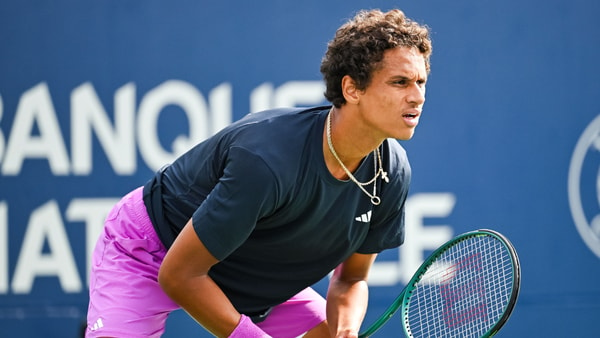
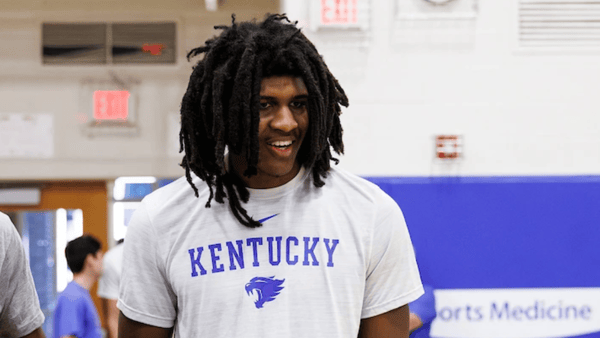

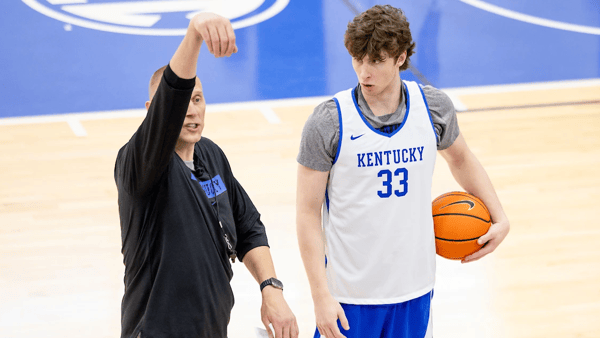
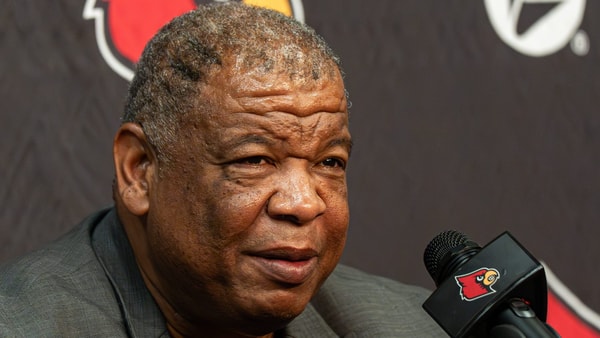
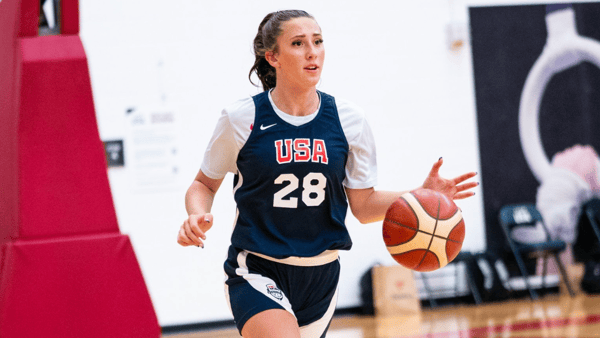
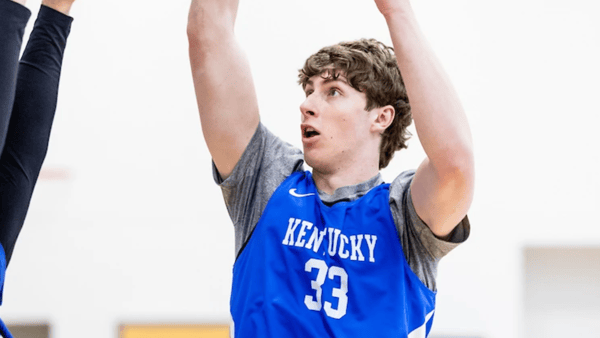

Discuss This Article
Comments have moved.
Join the conversation and talk about this article and all things Kentucky Sports in the new KSR Message Board.
KSBoard